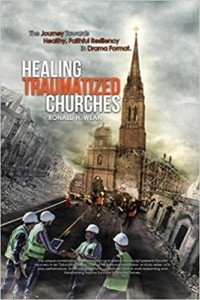Title: Healing Traumatized Churches: A Journey Towards Healthy, Faithful Resiliency in Drama Format
Author: Pastor Ronald H. Wean, MDiv, MEd, LPCC, CEAP
Publisher: Xulon Press
ISBN: 978-1-951966-02-7
Genre: Religion and Spirituality
Pages: 222
Reviewed by: Jason Lulos
Pacific Book Review
Healing Traumatized Churches is quite a thoughtful work. It’s practical, meaningful, and relevant in what seems to be a time of social and institutional reckoning. Pastor Ronald Wean prescribes a spiritual and logical strategy for dealing with trauma, individually and in the church. When trauma is buried, healing does not take place: even if it is forgotten. Rather than burying trauma with notions like “time heals all wounds” or “God fixes all things,” Wean implores readers to be proactive. Uncovering root causes of trauma requires self and communal introspection and even a willingness to question church leaders who discourage this kind of openness. To tackle these problems, Pastor Wean provides a clear and concise strategy that will benefit any individual and certainly any church where corruption and/or trauma has taken place.
Pastor Wean’s strategy is inspired for many reasons. He has developed a language of terms, metaphors, and analogies to help us articulate trauma, particularly in the church. This shared language facilitates communication. He addresses how the brain processes trauma and discusses the psychological context of post-trauma (including the language of first-responders). He encourages truth and openness. When the congregation and/or its leaders discourage talk of trauma or any challenge to institutional doctrine or tradition, trauma remains buried. Pastor Wean favors a more open and inclusive tone in how parishioners and church leaders interact. This is to foster a safe space: one of acceptance so that discussing trauma is normalized. With the stigma gone, people are more comfortable and therefore, more likely discuss and heal buried trauma.
A real standout in the book is Pastor Wean’s use of dramatic dialogue to illuminate the actual processing of deeply buried traumas. These ongoing scenes supplement each section of the book. They feature two pastors (Mark and Lucy) and another man (John) frustrated with his church’s reluctance to deal with trauma. The three protagonists attend a workshop where they actually process their own traumas. Mark, Lucy, and John feel safe, they open themselves up, dig up their traumatic events, and start to heal. It’s a brilliant way of actually showing how to employ the language of terms and metaphors in a safe space where they are not afraid, embarrassed, nor intimidated to deal with their individual and congregational issues.
This book’s method is effective because it is practical and perhaps more importantly because it is fundamentally rooted in Christianity itself. Christ’s death is the most unimaginable trauma turned into the most glorious resurrection. Pastor Wean refers to Christ as the “Traumatized One.” Here, the spiritual and philosophical message is about how to process trauma the crucifixion and how to learn from it and heal resurrection. This Ultimate message perfectly reflects the practical approaches in the book.
This is a complete work. There is thematic link between Christ’s trauma and our own. There is the linguistic framework for contextualizing trauma. Pastor Wean also includes appendices of homework “hopework” – exercises for creating that open and honest atmosphere of working through trauma. The addition of the journeys of Mark, Lucy, and John presented in a drama format is such an efficacious addition because it perfectly demonstrates those themes and strategies.
Healing Traumatized Churches: A Journey Towards Healthy, Faithful Resiliency in Drama Format is a powerful and clear guide for dealing with trauma. Highly recommended as an individual guide and certainly for those who want to help their churches and congregations develop into places more conducive to healing.


